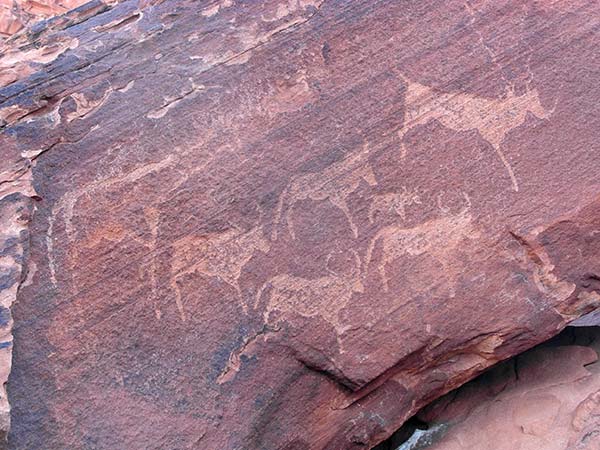
Twyfelfontein rock etchings (Enlarge)
Twyfelfontein is a site of ancient rock engravings in the Kunene Region of northwestern Namibia. It consists of a spring in a valley flanked by the slopes of a sandstone table mountain that receives very little rainfall. The site has been inhabited for 6,000 years, first by hunter-gatherers and later by Khoikhoi herders. Both ethnic groups used it as a place of worship and a site to conduct shamanist rituals. In the process of these rituals at least 2,500 items of rock carvings have been created, as well as a few rock paintings. Displaying one of the largest concentrations of rock petroglyphs in Africa, UNESCO approved Twyfelfontein as Namibia's first World Heritage Site in 2007.
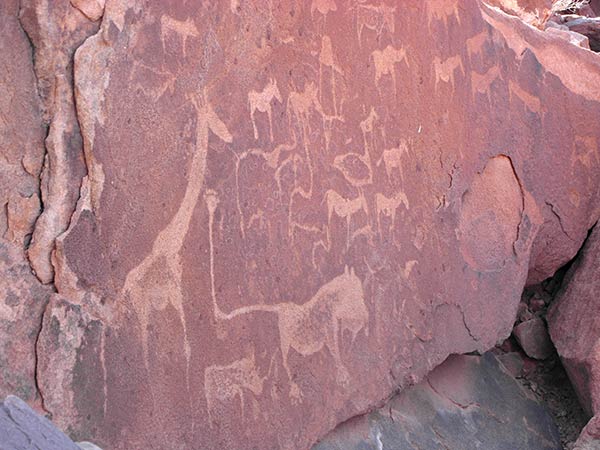
Twyfelfontein rock etchings (Enlarge)
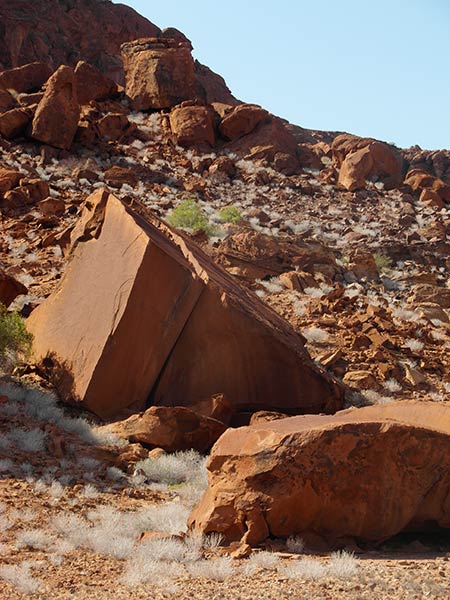
Twyfelfontein rock etchings site (Enlarge)
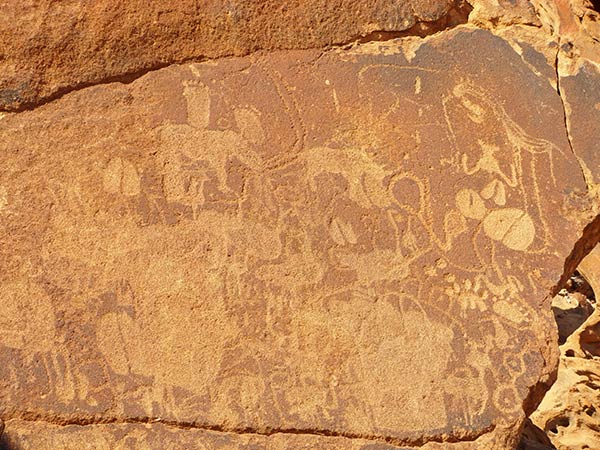
Twyfelfontein rock etchings (Enlarge)
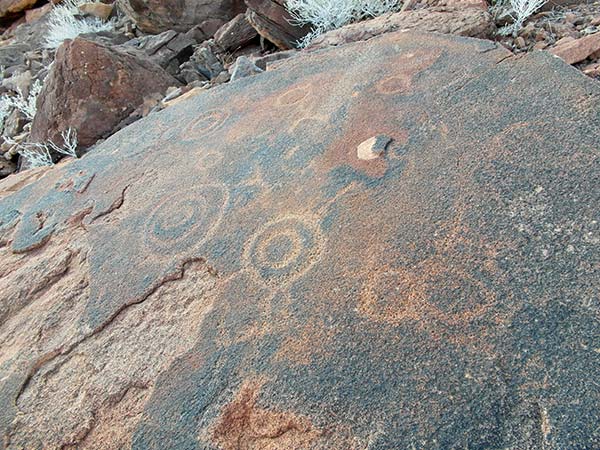
Twyfelfontein rock etchings (Enlarge)
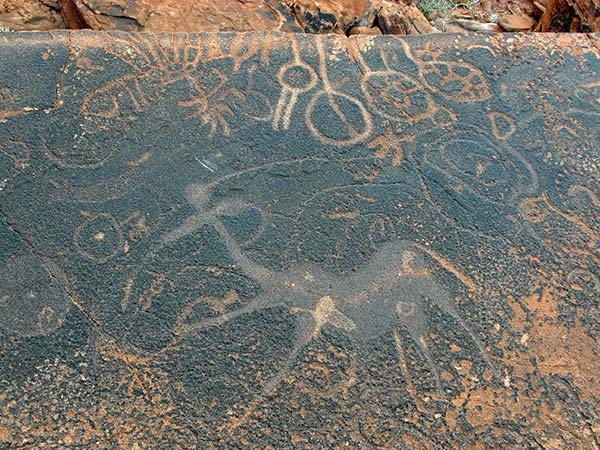
Twyfelfontein rock etchings (Enlarge)
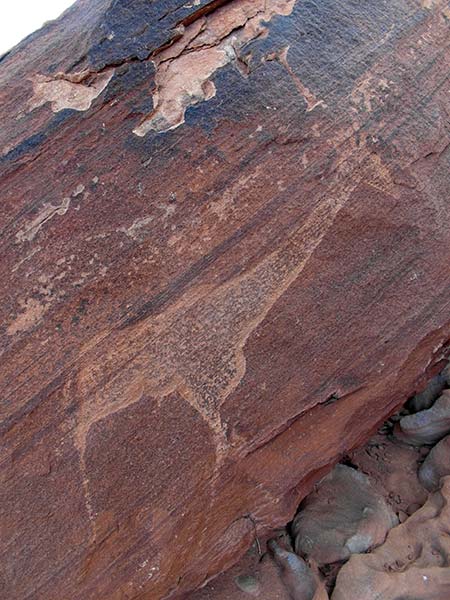
Twyfelfontein rock etchings (Enlarge)
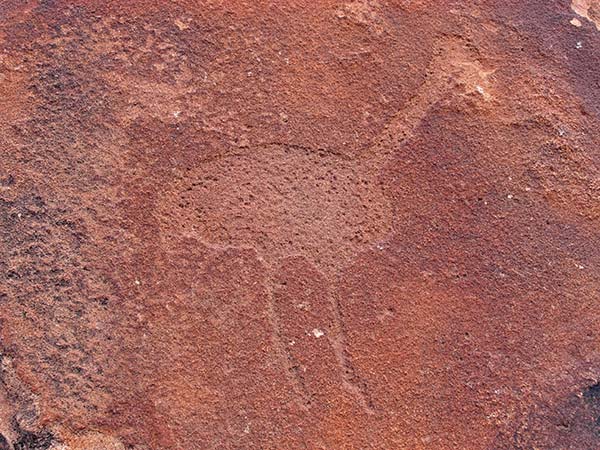
Twyfelfontein rock etchings (Enlarge)
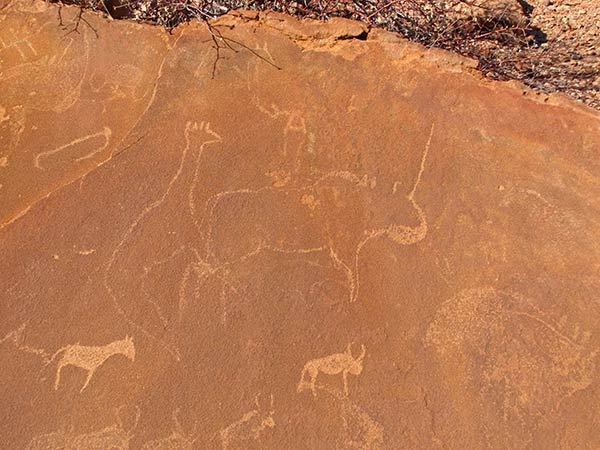
Twyfelfontein rock etchings (Enlarge)
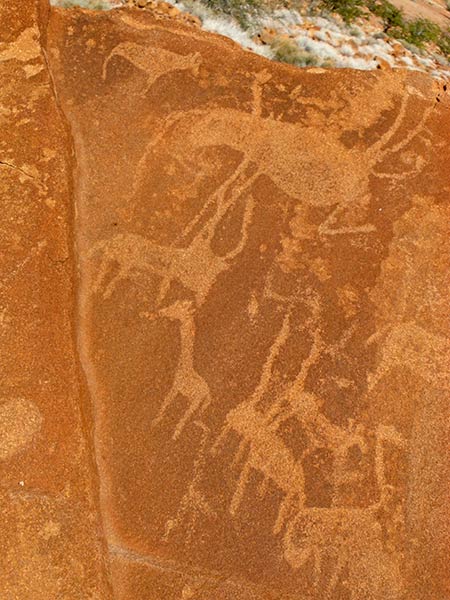
Twyfelfontein rock etchings (Enlarge)
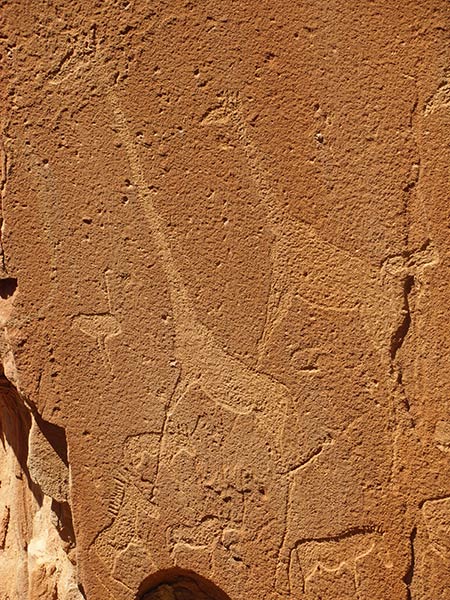
Twyfelfontein rock etchings (Enlarge)
Author's note: It is inaccurate and misleading to describe and label the rock paintings and etchings in caves strewn across the vast region of southern Africa as 'rock art' for two reasons. One, while the paintings and etchings were often done with varying degrees of artistic ability, their purpose was not artistic but rather shamanic, ceremonial and therapeutic. Two, while the paintings and etchings did indeed have various shamanic, ceremonial and therapeutic functions, they are better understood to be markers of specific geographic places of power, spirit and energy. That is what is most important; whatever the (supposed) meaning of the paintings and etchings, their geographic locations are primary while the human artifacts are secondary.
 Martin Gray is a cultural anthropologist, writer and photographer specializing in the study of pilgrimage traditions and sacred sites around the world. During a 40 year period he has visited more than 2000 pilgrimage places in 165 countries. The World Pilgrimage Guide at sacredsites.com is the most comprehensive source of information on this subject.
Martin Gray is a cultural anthropologist, writer and photographer specializing in the study of pilgrimage traditions and sacred sites around the world. During a 40 year period he has visited more than 2000 pilgrimage places in 165 countries. The World Pilgrimage Guide at sacredsites.com is the most comprehensive source of information on this subject.For additional information consult:
https://en.wikipedia.org/wiki/Twyfelfontein
http://www.africanworldheritagesites.org/cultural-places/rock-art-pre-history/twyfelfontein.html
http://whc.unesco.org/en/list/1255
